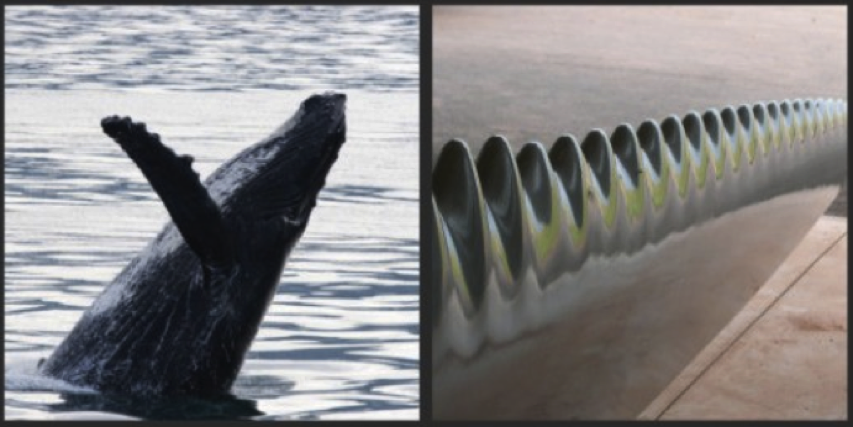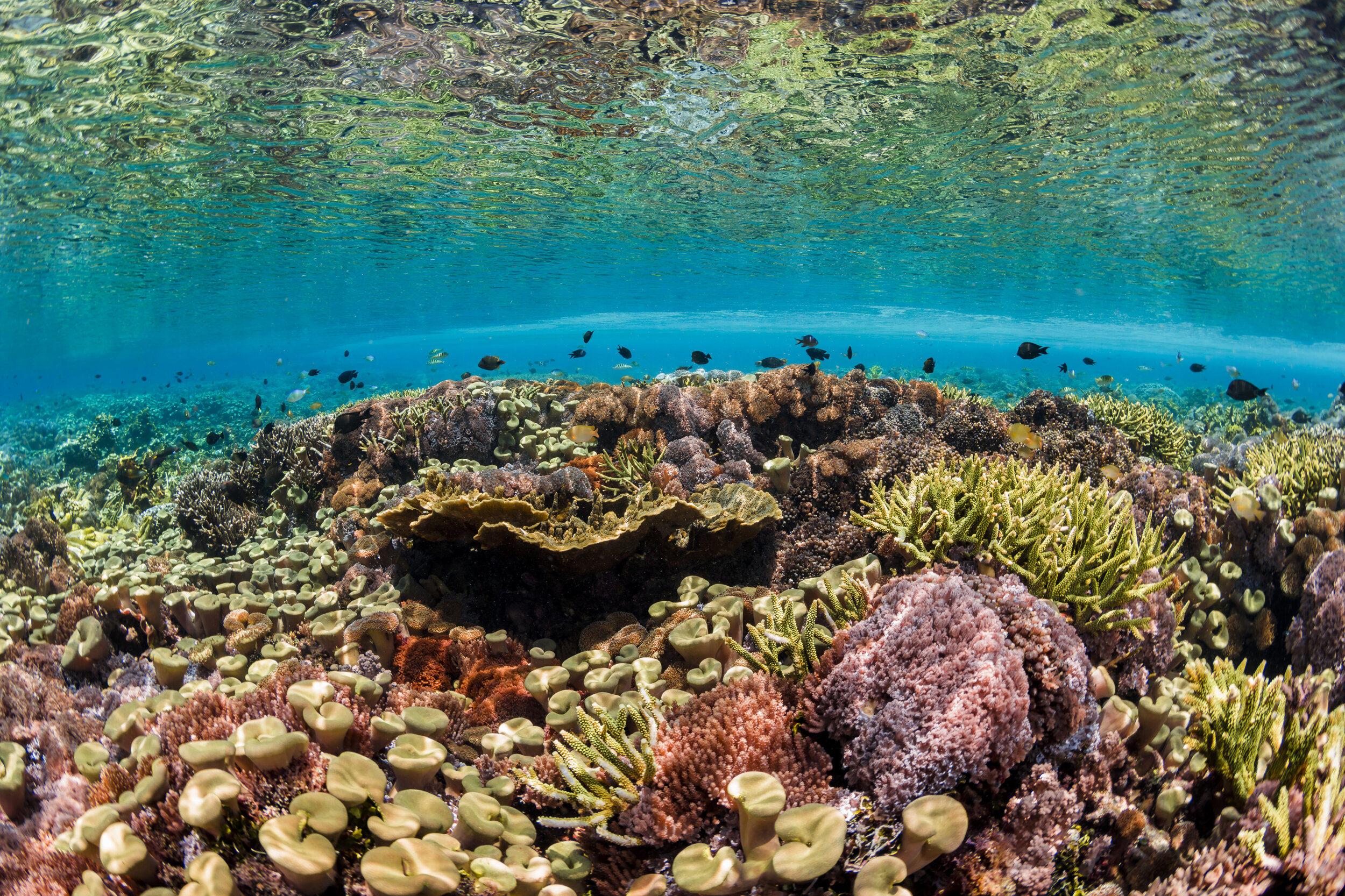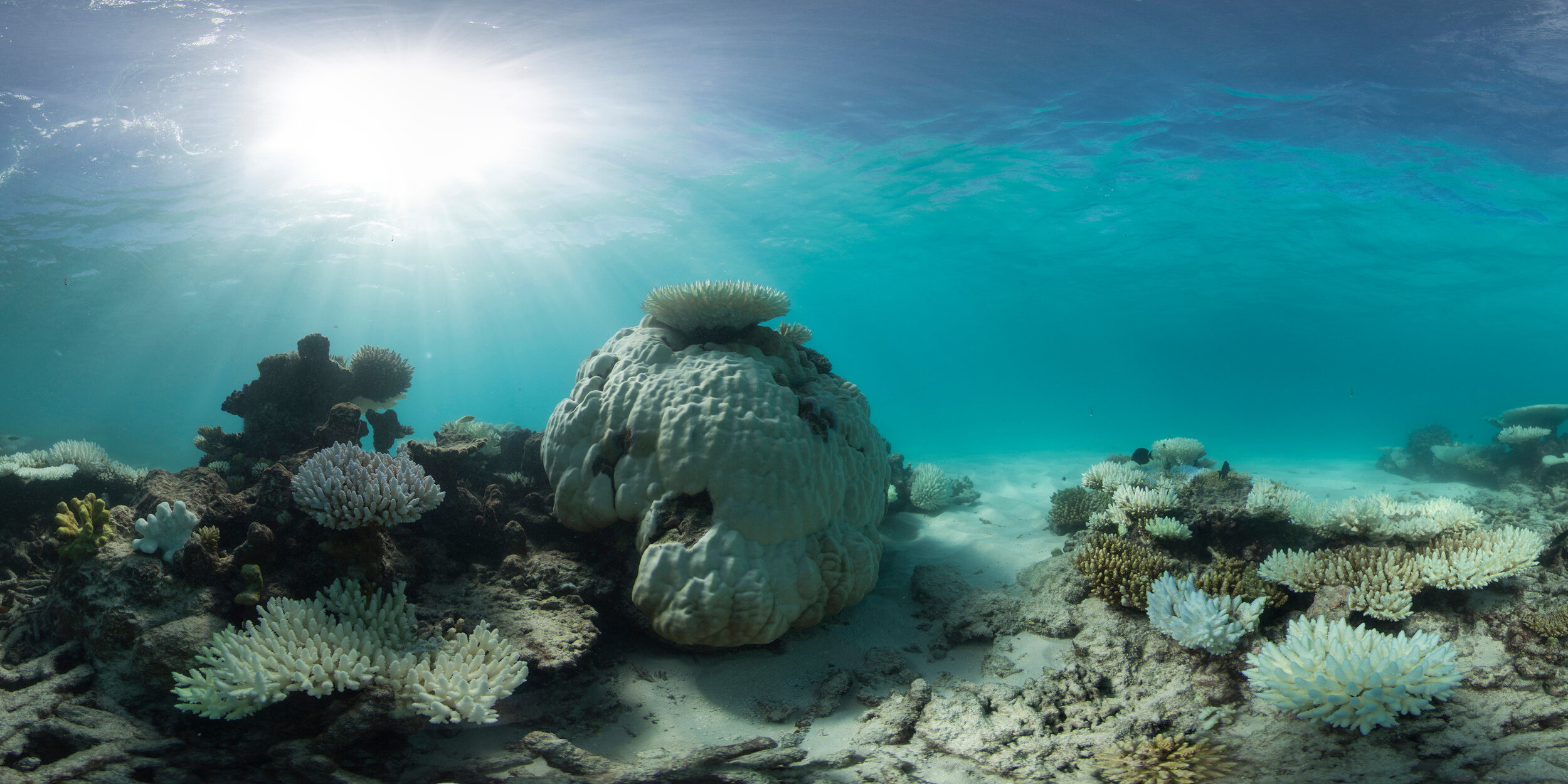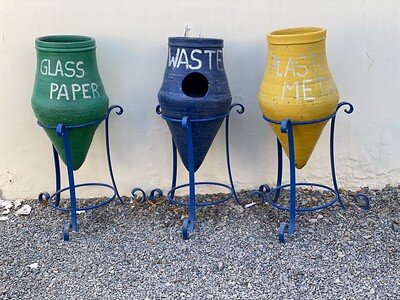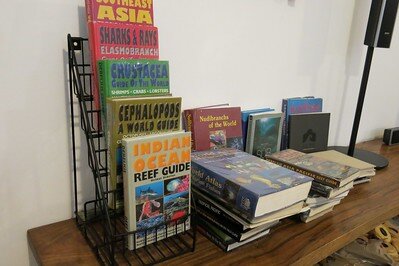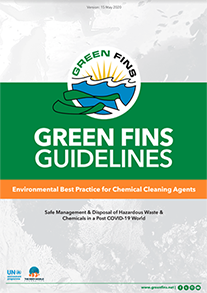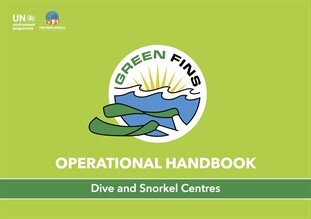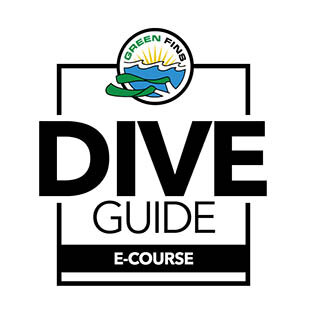Lessons from the reef: A resilient future for marine tourism
We are no strangers to repurposing ideas from mother nature. Airplane wings have been improved by copying bird wing designs. Boat surfaces have been designed to mimic shark skin for their streamlined, no-drag property that prevents animals (e.g. barnacles) from growing on them. Wind turbines are being adjusted with design elements from humpback whale flukes to improve aerodynamics. The list goes on for the technological lessons from the natural world, but there’s even more we can learn from the reefs that have survived for 485 million years.
The ridges on a a humpback whale’s fluke (tubercles) allow these giants to be really agile in the water. The ridges are being copied to improve the fluid dynamics of propeller blades! Image source.
As we enter into the second half of what feels like the longest year in history, it’s clear that even the most pessimistic of us failed to understand the length and magnitude of this pandemic. For the tourism industry, this is perhaps even more true. Over recent years, tourism has featured more and more heavily in national economic recovery or growth plans; it has been increasingly seen as the unfailing redemption for many countries struggling to make gains from other economic activities. Until 2020, where we’ve seen dramatic impacts on tourism’s ability to hold on through the pandemic.
Coral reef, Komodo Indonesia
CREDIT: BETH WATSON/ CORAL REEF IMAGE BANK
It strikes me as a similar plight to coral reefs – themselves a major draw for tourism – which have been dealing with their own unprecedented global events recently. They suffered the first global coral bleaching events in 1998 and 2010, then the terrifyingly drawn-out three year bleaching event from 2014–2017. Another mass bleaching event may have just started in 2020.
These are serious events that have decimated reefs around the world and have literally brought scientists to tears. However, reefs still exist, and continue to attract tourists. Promoting their resilience – their ability to recover after stressful events – has become a key management strategy for reef scientists and governments all over the world. Perhaps a functioning ecosystem is not so different from a functioning business, and the marine tourism industry could take a couple of lessons from the book of coral reefs.
Diversity is key to survival.
Diversity is a key strength when it comes to survival: for businesses and ecosystems! On reefs, diversity is the many different species that have overlapping jobs that contribute to the ecosystem functioning as it should. So, in the event of disruption, there’s always another species to take over the job. In the private sector, maintaining a diversity of income streams or products, staff skills and culture, customer segments and suppliers can see a business through big changes.
During this pandemic, getting customers back through the door is the biggest challenge. There has been a massive shift to online products from both dive training agencies and tourism operators (aka diversifying) and, interestingly, environmental messaging has been a common theme. This has the added benefits of safeguarding customer relationships as well as increasing the public’s awareness of the marine environment, motivating behaviour change and, ultimately, reducing threats to reefs. In doing so, the dive industry is protecting its primary business asset meaning the reef itself is more resilient and better able to survive its own big changes.
A bleached reef in the Maldives. Credit: The Ocean Agency / XL CATLIN SEAVIEW SURVEY
What is coral bleaching? Corals have a mutually beneficial relationship with zooxanthellae that provide 80% of the coral’s energy plus its colour. Coral bleaching occurs because increased sea temperatures (an impact of climate change) cause metabolic changes that lead to toxic byproducts being produced by the zooxanthellae. In response, the corals eject the zooxanthellae – giving a bleached appearance – and beginning a slow starvation unless temperatures return to normal.
Integrate resilient features
If CO2 levels continue to rise, we can safely assume that coral reefs and businesses alike will experience more frequent and more severe shocks in the future. For coral reefs, this means more bleaching events, and less time to recover in between. For the private sector, these shocks could range from disruption of supply chains because of varying climate conditions and reductions in the environmental aesthetic draw for tourism (e.g. bleached reefs) to a shift in consumer demand for eco friendly services. .
Algal zooxanthellae (brown dots) within coral polyps | Source
Incredibly, reefs are already preparing for the worst. Studies have shown that some coral species swap out their regular zooxanthellae for tougher, more heat resistant strains. These strains do not produce toxic byproducts until reefs reach higher temperatures: allowing corals to better survive future bleaching events.
In the diving industry, improving environmental performance provides a two-fold resilience. It will be meeting the demand of an increasingly environmentally aware and proactive customer base. By operating in a more environmentally friendly manner, tourism businesses are also protecting the environment the business is built on.
Act now
Running an environmentally friendly operation doesn’t have to mean big beach clean up events, or a fancy long-term monitoring programme (although that’s great if you have the capacity and skills within your team!). If it’s feasible at this time, making simple, positive changes to daily operating practices are a great way to make the most of the pandemic down time.
Managing waste properly is an easy daily practice to improve! One step is to make sure the bins are deep enough to prevent trash from blowing away
Providing environmental education to your guests can be as simple as having marine life ID guides freely available around the shop.
Through our Green Fins initiative (which we manage in partnership with the UN Environment Programme), Reef-World has created several tools to break these changes down into bite-sized actions for managers, dive staff and boat crew to use, be trained in, or start promoting to their customers:

